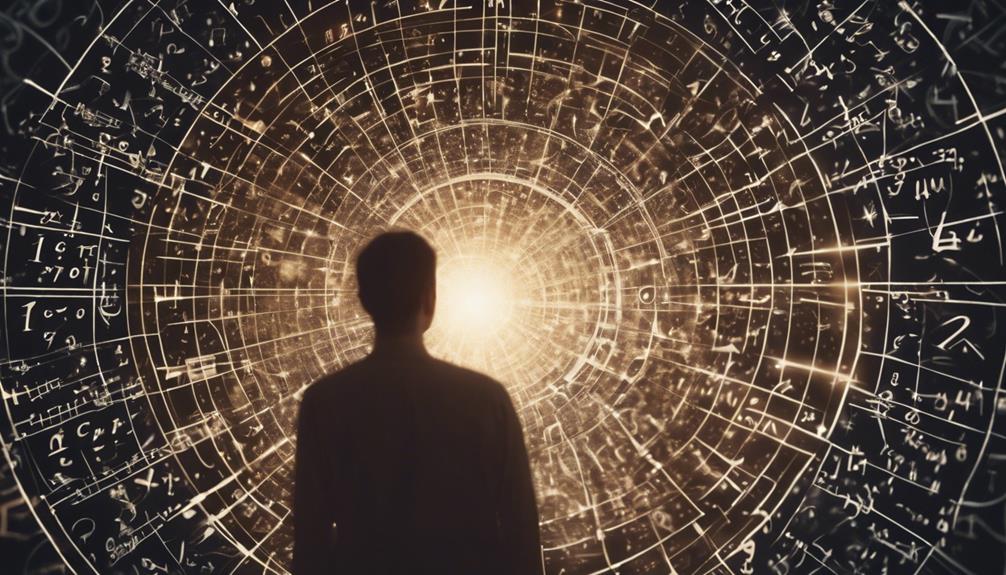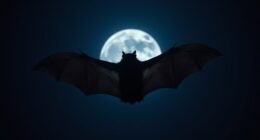Join us as we uncover the meanings behind 10 powerful Norse Pagan symbols. Thors Hammer, known as Mjölnir, symbolizes strength and protection wielded by the mighty Thor. Yggdrasil, the Tree of Life, represents the interconnectedness of life cycles and wisdom in Norse mythology. The Valknut signifies an honorable death in battle and protection from malevolent spirits. The Helm of Awe offers strength and protection against adversaries. Huginn and Muninn, Odin's Raven Pair, symbolize communication and insight. Explore these and more symbols to gain a deeper understanding of ancient Norse beliefs and culture.
Key Takeaways
- Mjölnir symbolizes Thor's power of thunder and protection.
- Yggdrasil embodies interconnectedness of life and wisdom.
- Valknut signifies honorable death in battle and protection.
- Helm of Awe offers strength, protection, and resilience.
- Huginn and Muninn symbolize communication and insight in Norse mythology.
Thors Hammer – Mjölnir Meaning
Thors Hammer, known as Mjölnir, embodies the power of thunder and lightning in Norse mythology. This symbol, associated with the mighty god Thor, son of Odin, is more than just a weapon; it represents strength and protection in Viking culture. Wielding Mjölnir, Thor could level mountains and strike fear into the hearts of his enemies. Vikings, recognizing the significance of Thors hammer, often wore it as an amulet for protection, a practice that endured even during the Christianization period. The hammer's association with Thor, the god of thunder, made it a potent symbol of power and resilience.
Mjölnir's presence in Norse culture signifies not just physical strength but also spiritual protection. The blending of beliefs, as seen in Vikings wearing both Thors hammer and a cross, showcases the complexity of their worldview. Thors hammer, with its ties to both Thor and Odin, remains a powerful symbol that continues to fascinate and inspire modern audiences seeking to tap into its ancient significance.
Yggdrasil – Tree Of Life Symbolism

Symbolizing the interconnectedness of the nine domains in Norse mythology, Yggdrasil, the Tree of Life, embodies the cyclical nature of life, death, and rebirth. This majestic tree isn't merely a symbol but a cosmic axis that holds the universe together, connecting all worlds.
In Norse mythology, Yggdrasil is home to various creatures and deities, emphasizing its central role in the cosmos. Odin, the Allfather, sought wisdom and knowledge by sacrificing himself to himself on the branches of Yggdrasil, highlighting the tree's association with wisdom and enlightenment.
As a representation of the eternal cycle of life, Yggdrasil serves as a profound reminder of the interconnectedness of all beings and the continuous flow of existence. Its roots reach deep into the earth, its branches stretching high into the heavens, bridging the physical and spiritual worlds in a sacred union that echoes throughout the mythology of the Norse pantheon.
Valknut – Symbol of Battle Death

Yggdrasil's profound symbolism in Norse mythology gives way to the Valknut, a powerful emblem associated with a warrior's honorable death in battle. The Valknut symbol holds significant meaning in Norse culture, representing bravery and sacrifice on the battlefield.
Here are some key points about the Valknut:
- The Valknut symbolizes a warrior's death in battle, highlighting the valor and courage displayed in combat.
- It's commonly depicted on ancient Norse stone carvings and funerary steles, showcasing its importance in honoring fallen warriors.
- Believed to offer protection against malevolent spirits, the Valknut is often carried as a talisman by warriors seeking divine safeguard.
- Comprised of three interlocking triangles, the Valknut symbolizes the interconnectedness of the nine worlds in Norse mythology, emphasizing the unity of all existence.
- In contemporary times, the Valknut is interpreted as a symbol of heathen beliefs, embracing the traditions and values of Norse paganism.
Helm Of Awe – Protection Symbol
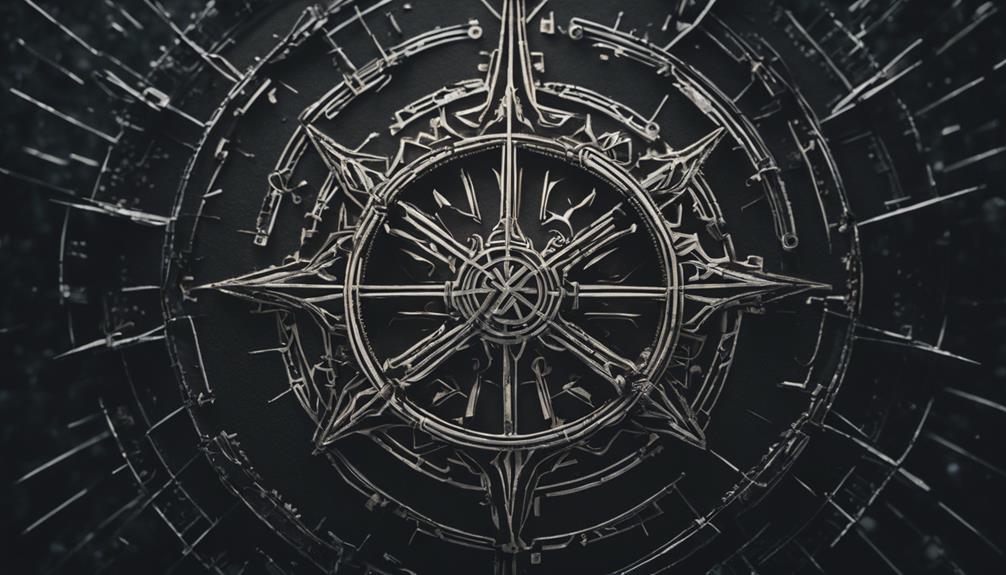
The Helm of Awe symbol holds great significance in Norse mythology, representing strength and protection. Its intricate history and origins add depth to its symbolism, making it a revered emblem of power.
Modern interpretations of this symbol continue to highlight its role in offering courage and safeguarding against adversity.
Symbol of Strength
In Norse legend, the Helm of Awe symbol, also known as Aegishjalmur, embodies protection and courage, serving as a source of strength for Viking warriors in battles and challenges.
- The Helm of Awe symbol was worn as an amulet by Viking warriors seeking protection and success.
- It instilled fear in enemies and shielded wearers from abuses of power.
- Translated as the helm of awe or helm of terror, it symbolized striking fear into adversaries.
- Modern interpretations highlight its protective qualities against diseases and fears.
- The Helm of Awe symbolizes inner strength and resilience, empowering individuals to face obstacles with courage and determination.
History and Origins
Having originated as a symbol of protection and courage in Norse mythology, the Helm of Awe holds a significant place in the history of ancient Viking warriors. This protective symbol, also known as the 'helm of terror,' was worn between the eyes by warriors to instill fear in their enemies and safeguard against the abuse of power. Believed to possess magical properties, the Helm of Awe was used not only in battles but also to shield against diseases and instill a sense of strength in individuals combating anxiety or depression. Below is a table summarizing key facts about the Helm of Awe:
| Fact | Description |
|---|---|
| Symbolism | Represents protection and courage in Norse mythology |
| Usage | Worn between the eyes by Viking warriors for fear induction and power protection |
| Magical Properties | Believed to have protective properties against diseases and fear |
| Impact on Mental Health | Often used to empower individuals facing anxiety or depression |
Modern Interpretations
With its enduring symbolism and protective aura, the Helm of Awe continues to captivate modern interpreters seeking courage and fortitude.
- The Helm of Awe is a symbol of power and protection, instilling a sense of strength and security.
- Modern interpretations view the Helm of Awe as a potent Norse symbol that wards off negativity and promotes empowerment.
- This protective symbol is often associated with resilience and overcoming challenges, inspiring individuals to face their fears with bravery.
- The symbol consists of three interlocking triangles, representing the interconnected forces of protection, courage, and inner strength.
- In contemporary contexts, the Helm of Awe is embraced as a talisman of courage and a reminder of one's ability to overcome adversity.
Huginn And Muninn – Raven Pair
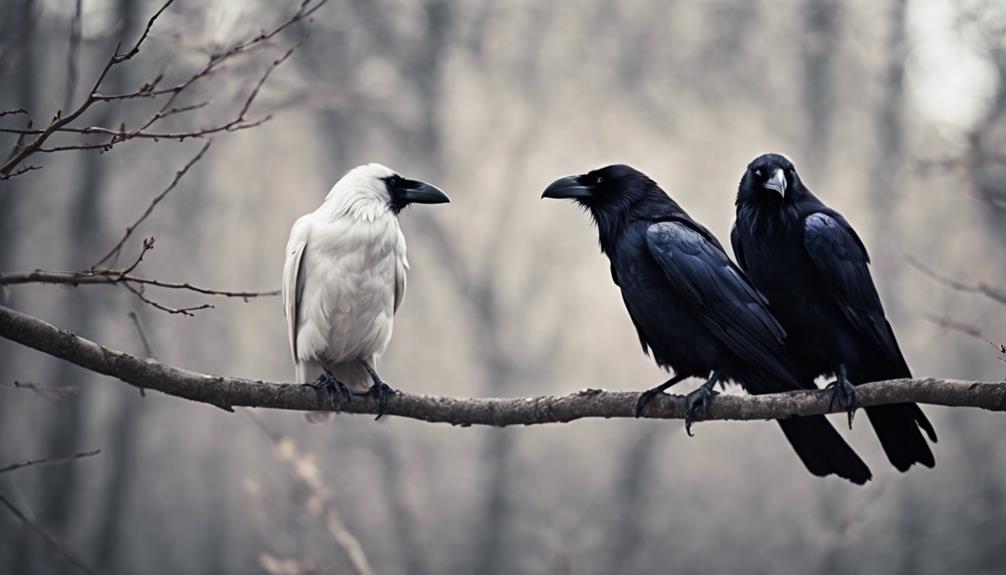
Huginn and Muninn, the twin ravens of Odin, are symbolic messengers known for seeking wisdom.
Huginn represents memory, while Muninn embodies thought, making them essential to Odin's quest for knowledge.
These intelligent birds traverse the Nine Worlds, bringing back important news and insights to the Allfather.
Symbolic Raven Messengers
What essential role do the twin ravens, Muninn and Huginn, play in Norse mythology?
- Messengers for Odin: Huginn and Muninn serve as messengers for Odin, the Allfather.
- Gather Important News: They're sent out daily to gather news from the Nine Worlds.
- Return with Whispers: The ravens return in the evening, whispering the knowledge they've acquired.
- Key to Knowledge: Playing an integral role in Odin's wisdom, they represent memory and thought.
- Symbolize Communication: Huginn and Muninn symbolize communication and insight in Norse mythology.
Odin's Wisdom Seekers
Gathering essential information across the Nine Worlds daily, Odin's twin ravens, Huginn and Muninn, are integral to his pursuit of wisdom. These ravens symbolize memory and thought, flying far and wide to bring back important tidings to Odin. As constant companions to the All-Father, they play a significant role in his quest for knowledge.
Returning each evening, they whisper their findings, enriching Odin's understanding of the world. Their presence emphasizes the interconnectedness of the domains and the importance of seeking wisdom through exploration.
In Norse mythology, Huginn and Muninn serve as powerful reminders of the value of curiosity and the relentless pursuit of truth.
Web Of Wyrd – Matrix Of Fate

The Web of Wyrd, symbolizing the interconnected tapestry of fate woven by the Norns, holds a central place in Norse mythology. This intricate symbol reflects the interconnectedness of past, present, and future events, illustrating how actions in life can influence the unfolding of fate.
Some key points about the Web of Wyrd include:
- The symbol represents the tapestry of fate woven by the Norns.
- It signifies the interconnectedness of all events in Norse mythology.
- Associated with the well of Urd, where the Norns dwell.
- Belief that our actions impact the future events depicted in the web.
- Despite the lack of written evidence from Viking times, the concept remains significant in Norse beliefs.
The Web of Wyrd serves as a reminder of the profound connection between our actions and the outcomes that shape our destinies, offering a unique perspective on the complexities of fate in Norse mythology.
Troll Cross – Protection Against Creatures

We're about to explore the origins of the Troll Cross, revealing its symbolic powers and how it's used today.
This protective amulet, crafted from iron, has long been worn to shield against malevolent beings like trolls and elves.
Discover how this ancient Norse symbol continues to offer protection in modern times.
Troll Cross Origins
Exploring the origins of the Troll Cross reveals its significance as a protective amulet against supernatural creatures like trolls and elves.
- The Troll Cross is an iron amulet from Sweden used for protection against malevolent beings.
- Its circular design crossed in an oval rune shape wards off danger effectively.
- Carved in the Othala rune form, it decreases the chances of encountering harm.
- This symbolizes protection against supernatural entities in Norse folklore.
- Wearing the Troll Cross served as a charm for Scandinavian people to guard against evil forces.
Symbolic Powers Revealed
After understanding the protective nature of the Troll Cross against supernatural beings like trolls and elves, let's now uncover the symbol's deeper symbolic powers.
The Norse symbol of the Troll Cross serves not only as a shield against malevolent creatures but also as a powerful amulet for overall protection. Its intricate design, featuring a circular iron shape crossed in the form of the Othala rune, signifies more than just defense; it embodies a connection to ancestral roots and the safeguarding of one's heritage.
This symbol from Norse folklore is deeply rooted in the belief of safeguarding individuals from harm and warding off evil forces, making it a potent emblem of protection with a rich history and significance in Norse culture.
Modern Usage Trends
In contemporary times, the use of the Troll Cross as a protective amulet against supernatural creatures like trolls and elves continues to endure. When it comes to Norse culture and symbols used for protection, the Troll Cross stands out for its efficacy in warding off evil forces.
Here are some modern usage trends surrounding the Troll Cross:
- The Troll Cross remains a popular choice for those seeking protection against malevolent beings.
- Many individuals in Sweden still rely on the Troll Cross to safeguard themselves from supernatural entities.
- The Troll Cross symbolizes a connection to ancient Norse beliefs and traditions.
- Its design, featuring a circular iron shape crossed in an oval rune, adds a touch of mystique to its protective qualities.
- People continue to embrace the Troll Cross as a symbol of strength and defense against evil influences.
Triple Horn Of Odin Significance
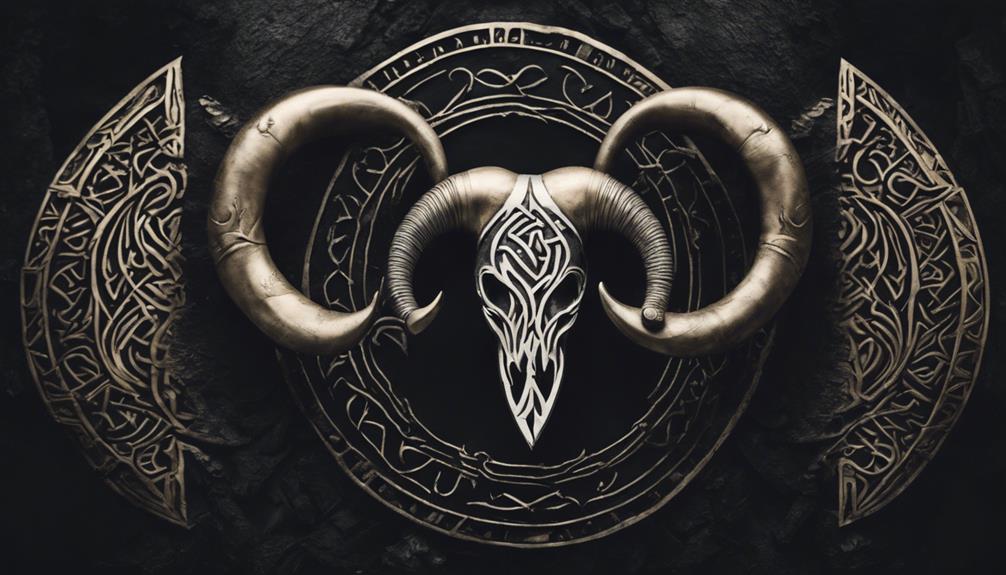
Symbolizing inspiration and wisdom, the Triple Horn of Odin consists of three interlocked drinking horns and is closely associated with Odin, the Allfather in Norse mythology. This symbol, also known as Odin's Knot, holds deep significance in the pursuit of knowledge and wisdom.
Worn by artists and writers seeking creative inspiration, the Triple Horn of Odin dates back to the 8th or 9th century, showcasing its enduring relevance. In Norse culture, this symbol embodies Odin's relentless quest for truth and wisdom, making it a powerful emblem for those who value intellectual pursuits.
As a representation of Odin's commitment to gaining knowledge, the Triple Horn of Odin serves as a reminder to embrace continuous learning and seek inspiration in all aspects of life. Embracing this symbol not only honors the Allfather but also encourages individuals to approach challenges with a curious and open mind, ready to learn and grow.
Gungnir – Odin's Spear Meaning

With its magical properties and association with Odin's power, Gungnir holds a significant role in Norse mythology. Gungnir, Odin's spear, is a remarkable weapon crafted by dwarves, possessing mystical abilities that set it apart from ordinary weaponry. Here are five key points to ponder regarding the significance of Gungnir:
- Gungnir is Odin's trusted weapon, gifted with the power to never miss its mark, embodying precision and determination.
- This spear symbolizes inspiration and courage, serving as a source of strength for those who wield it in battle or quests for wisdom.
- Odin's use of Gungnir in his pursuit of knowledge, as well as in times of sacrifice and warfare, highlights its versatile nature.
- The association of Gungnir with Odin's power and authority underscores its pivotal role in Norse mythological tales and rituals.
- Through its representation of divine strength and unwavering purpose, Gungnir continues to captivate audiences with its legendary status in Norse folklore.
Vegvisir – Runic Compass Interpretation
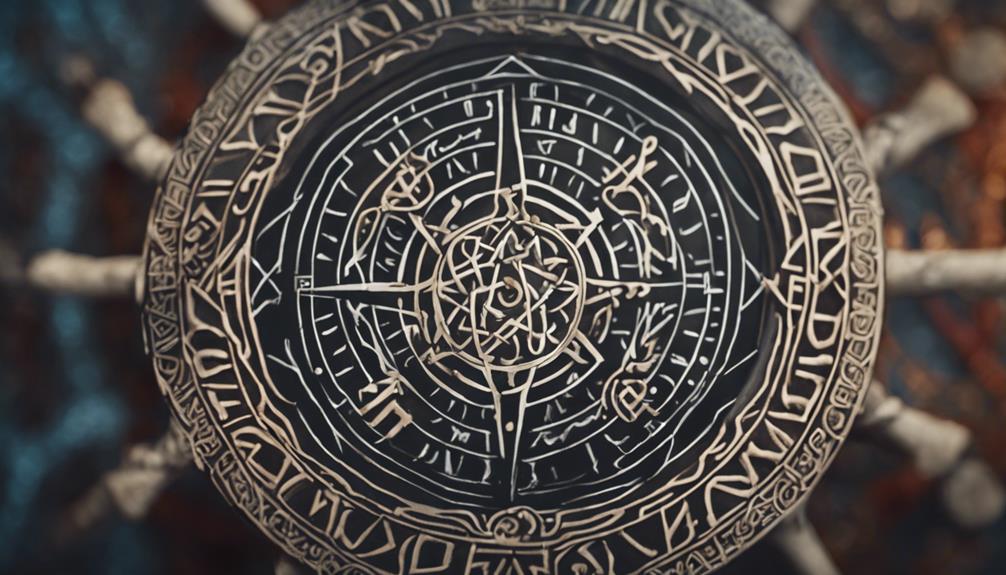
Sailing through the vast seas of Norse symbolism, the Vegvisir, also known as the Viking compass, stands as a beacon of guidance and protection for seafarers and travelers alike. This mystical symbol, with its intricate design, not only points the way home but also bestows luck, protection, and blessings upon those who carry it. The name Vegvisir translates to 'Let a man carry Vegvisir, and the man won't get lost,' emphasizing its role as a powerful talisman for individuals venturing into unknown territories.
In Norse beliefs, the Vegvisir symbolizes the importance of guidance and the assurance of safe travels. It serves as a reminder that even in the face of uncertainty, one can find their path and be shielded from harm. Whether used by Norse Shamans or everyday explorers seeking direction, the Vegvisir embodies the intertwined concepts of luck, protection, and blessings, making it a cherished symbol of guidance and security in Norse culture.
Frequently Asked Questions
What Do the Norse Symbols Mean?
Norse symbols carry profound meanings rooted in mythology and beliefs. Each symbol embodies specific concepts, gods, or life aspects. They serve for communication, protection, and spiritual connection.
Understanding these meanings is crucial for grasping their significance in Norse paganism. These symbols are a treasure trove of cultural and spiritual insights.
What Is the Most Powerful Norse Symbol?
We believe the most powerful Norse symbol is Mjölnir, Thor's hammer. This iconic symbol embodies protection, fertility, and good fortune. Connected to Thor's duty of safeguarding Asgard and Midgard, it consistently returns to his hand.
Its significance in Norse mythology is profound, often used in rituals for blessings and purification. Mjölnir promotes fertility, luck, and protection, making it a cherished emblem among Norse pagans and spiritual enthusiasts.
What Are the Norse Symbols of Protection?
When it comes to Norse symbols of protection, we've a variety to choose from. The Troll Cross, Vegvisir, and Svefnthorn are powerful choices for safeguarding against different dangers.
Each symbol carries its own unique significance and magical properties, providing a sense of security in various situations. Embracing these symbols can offer a shield of strength and guidance as we navigate through life's challenges.
What Is the Norse Magical Symbol?
The Norse magical symbol is known as the Vegvisir, often called the Viking compass.
Vegvisir translates to 'Let a man carry Vegvisir, and the man won't get lost.' It guides seamen back home and protects ships from storms in Norse mythology.
Symbolizing guidance, luck, and protection, it's a talisman for luck and blessings, especially for travelers in unfamiliar places. Often found in gardens or near homes, bottle trees are believed to trap negative spirits, ensuring safety for those nearby. The colorful glass bottles reflect light, warding off bad energy and acting as a beacon of hope and positivity. With bottle tree symbolism explained, it becomes clear that these structures offer more than just decorative charm; they carry a deep-rooted meaning of spiritual safeguarding and good fortune.
Conclusion
To sum up, Norse pagan symbols hold deep meanings and significance in the ancient belief system.
Did you know that the Helm of Awe, also known as Aegishjalmur, was believed to provide protection and induce fear in enemies?
Understanding the symbolism behind these powerful symbols can offer insight into the rich culture and beliefs of the Norse people.
Explore these symbols further to uncover more fascinating details about their meanings and history.


